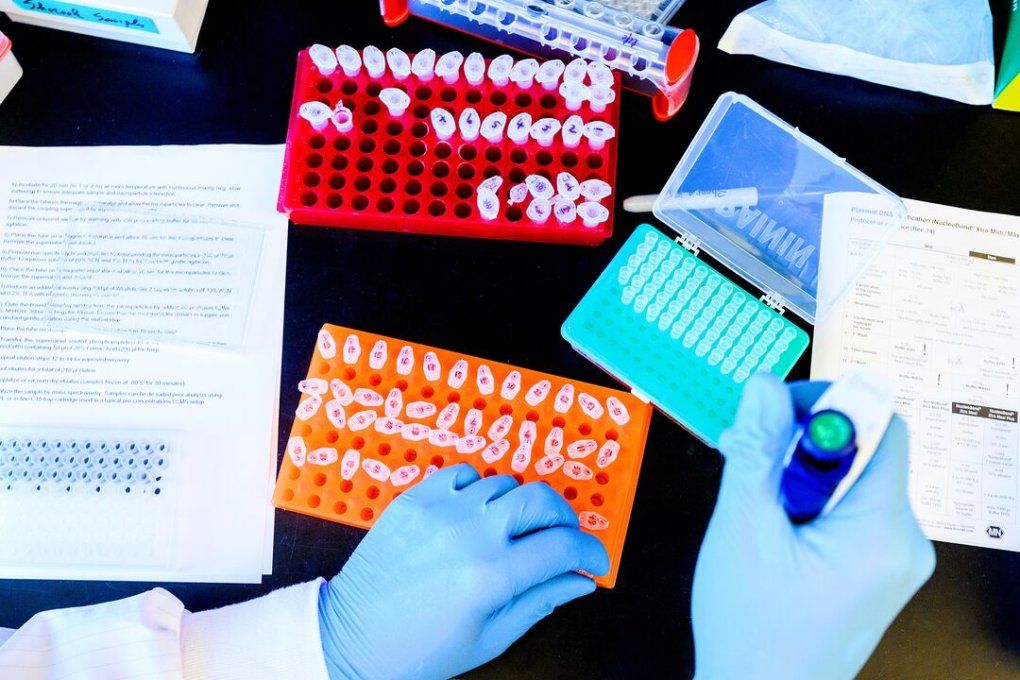
Nevan Krogan, PhD, speaks with research associate Antoine Forget, PhD, and specialist Rasika Vartak in his lab. Image by Noah Berger
Breast cancer, COVID-19, and autism may seem unrelated, but they share some surprising connections. Some of the same genes that are mutated in breast cancer also get hijacked by COVID-19, and some other genes mutated in cancer are also implicated in autism.
Commonalities like these have led Nevan Krogan, PhD, director of UCSF’s Quantitative Biosciences Institute, to examine in detail the effects of a handful of genes that seem to play an outsize role in a wide array of diseases.
Those effects rely on proteins, for which genes are the blueprints. When a gene is mutated, so is its protein.
“Our genome is relatively static, but proteins aren’t,” said Krogan. “They’re constantly interacting with other proteins in different contexts that change over time.”
Many conditions involve dozens of mutations, he added. Seeing the full landscape of a person’s disease means piecing together how each of those mutated proteins contributes to it.

“We’re finding the Achilles’ heels of the genome,” says Krogan, PhD. “By going beyond DNA and looking at these networks of protein interaction, we’re able to connect dots that we didn’t even know existed before.” Image by Noah Berger
More than a decade ago, Krogan began employing sophisticated quantitative approaches to create ‘cell maps’ that compare thousands of these protein-protein interactions, or PPIs, in healthy and diseased cells across a range of mutations in cancer, autism, and infectious disease.
He believes that zeroing in on these PPIs can elucidate how mutations disrupt cell functions and uncover entry points for safer and more effective treatments.